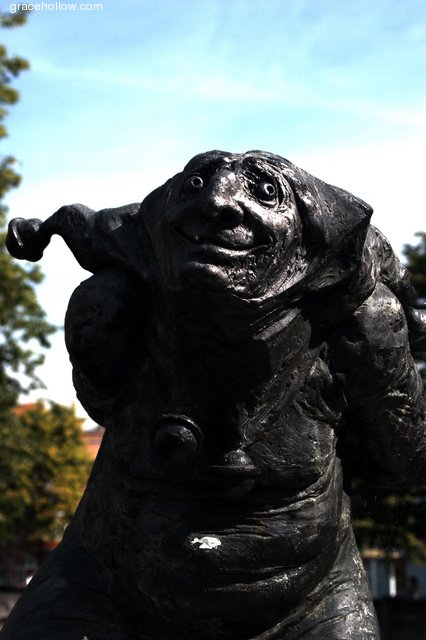




















|
|
| Our first trip to Leuven was in the
mid-1990's, when Russell did some consulting for the University here, so
this was much like visiting an old friend. Actually, it was
exactly like that - we had made plans to have lunch with the de
Schryvers, who had kindly looked after us on our previous trip.
Finding ourselves with a little extra time, we wandered around
remembering the various places we had seen before. Unlike our
first trip here, when it was winter, the flowers were blooming and it
was warm enough to leave the coat, hat, and mittens behind. The two
most notable buildings in Leuven are the filigree Stadhuis (Town Hall)
and Sint Pieters. The Stadhuis, with its distinctive silhouette,
was built in the 15th century on the Great Market Square of Leuven.
The building is covered with statues and 'carved niches'. Quoting
Leuven's official tourism website (www.leuven.be),
"The two rows of the ground floor represent artists, scholars and
eminent citizens of the Leuven past. The first floor displays figures
who symbolise the municipal privileges and the patron saints of the
parishes. On the second floor the Counts of Leuven and the Dukes of
Brabant can be noticed; the turrets represent biblical figures."
Just across from the Stadhuis is Sint Pieters, a lovely Gothic
church. (One of the trademarks of Gothic architecture is the use
of open space and lots of light.) The original church was built
here in 986, but burnt down a couple hundred years later. The
current building was begun in 1426, and included plans for three
towers. While walking around, I had assumed the towers - which are
very obviously missing - had been destroyed during some war.
It turns out that the ground wasn't stable enough to support the towers
as planned - they collapsed during construction.
The Leuven Stadhuis (Town Hall), which also serves as the tourist information office Sint-Pieterskerk (Collegiate Church of St. Peter). Notice the bell ringer - Meester Jan. The Fons Sapiente (Fount of Wisdom) Construction of the Stadhuis was begun in 1448 Another scene, presumably Paul, carved into the pulpit.Cathedral pulpits are almost like decorated booths, raised up above the congregation. The Grote Markt, next to St. Pieters and the Stadhuis

|
|